Techno (and More) in Torino – 12 Things We’ll Remember About Club to Club 2013
Last year, XLR8R made its first trip to Club to Club, a long-running festival in […]
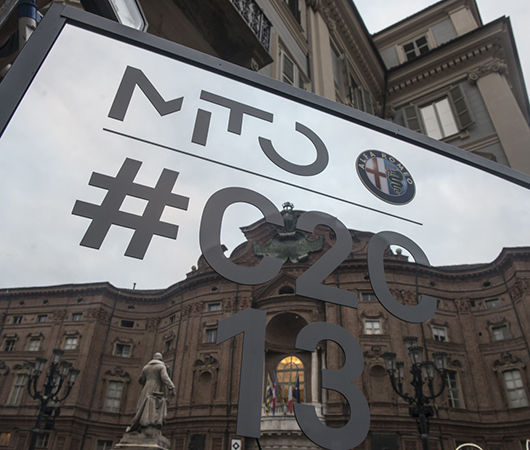
Techno (and More) in Torino – 12 Things We’ll Remember About Club to Club 2013
Last year, XLR8R made its first trip to Club to Club, a long-running festival in […]

Last year, XLR8R made its first trip to Club to Club, a long-running festival in Turin, Italy that is officially known as Alfa MiTo Club to Club. As our review detailed, we thoroughly enjoyed the event, and were particularly struck by its ability to put together an intelligent, forward-thinking line-up while also creating a fun, dancefloor-friendly atmosphere. Few festivals can capably manage this sort of duality, but Club to Club’s split personality actually seems to be a point of pride for the festival’s organizers—in truth, this year’s official theme was “TWINS,” which described the four-night event as a celebration of the “avant garde and a pop vocation, music and art, innovation and tradition.” Curious to see the results, we returned to Northern Italy last week, and after attending various events and partaking in some serious clubbing, we can confidently report that despite a few small hiccups, Club to Club once again delivered on its promise. In an effort to share a bit of the experience, we’ve catalogued a few of the festival’s most memorable moments.
John Talabot
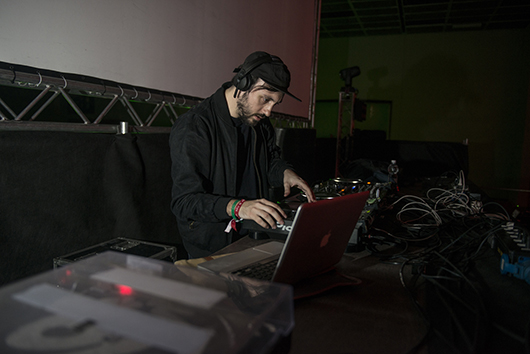
Surprise! John Talabot and Ben UFO were really good. Again.
At this point, anyone who’s been following XLR8R‘s festival coverage this year has probably noticed our fondness for John Talabot and Ben UFO, and although we’re running a serious risk of beating a dead horse, both of them were excellent at Club to Club. As it turned out, the two DJs served as the bookends for the main room at Saturday night’s Gran Finale at the Lingotto Fierre, an enormous, hangar-like venue. (Oddly enough, the Gran Finale actually takes place on the peniultimate night of the festival each year; regardless, it’s undoubtedly the centerpiece event of Club to Club.) In truth, it felt like an odd choice to have Talabot open up the festivities—his set began at 9 p.m.—but the Barcelona DJ did a wonderful job warming up the floor. Clearly aware of the situation, he put together a set of fuzzy, melodic, and, most importantly, slow-moving house cuts that established a low-key vibe while remaining true to his musical bent.
More than five hours after Talabot wrapped up his set, Ben UFO took to the main stage. Charged with the task of closing out the main room, he nonetheless faced a dancefloor that was still stuffed with partying Italians, even as the clock approached 5 a.m. Perhaps he sensed that energy, because instead of winding down the evening with a series of late-night grooves, the London DJ and Hessle Audio co-founder elected to go in hard, and spent the majority of his 75-minute session dropping sharp, exacting techno cuts that honestly sounded phenomenal. Without question, heavy kicks and low-end thuds kept things moving, but the tunes were rhythmically inventive, which prevented the music from becoming monotonous. When the lights came on at 6 a.m., there were still a couple of thousand people on the dancefloor that would have been happy to hear more.
James Holden (live)
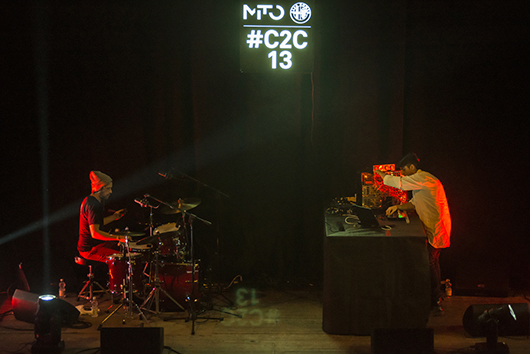
James Holden’s DJ set was a lot better than his live set.
James Holden was given double duty at this year’s Club to Club; on Thursday, we was scheduled to deliver the the European debut of his new live set, while Friday had him slated for a DJ set. In the hours leading up to his live show, the collective anticipation for Holden’s live set was palatable, especially because he was scheduled to perform at the Teatro Carignano, a gorgeous, multi-level theater that dates back to the 18th century. The house was packed when Holden took the stage alongside a live drummer, but our enthusiasm quickly waned once the music began. When done well, a live drummer will boost the rhythms of an electronic performance, but the drums weirdly sounded limp. Holden has never been known as a low-end specialist to begin with, and here, the rhythms were effectively toothless, which made the music sound oddly one-dimensional. Unfortunately, the melodies—which are supposed to be Holden’s specialty—weren’t much better. Although he spent the bulk of the set piloting an impressive-looking modular synth, the melodies were oddly flat. Combined with the weak low end, it simply felt like most of the sonic spectrum was being left empty; in short, the performance lacked the detail, nuance, and intensity that defines Holden’s recorded output, and his decision to stop and reset after each song meant that the show also lacked the usual flow and arc of his DJ sets. In fairness, Holden only recently began performing live, and he does seem like exactly the sort of artist who would be capable of putting together a top-flight live show. But based on what we saw at Club to Club, he’s got some additional work to do.
James Holden (DJ set)
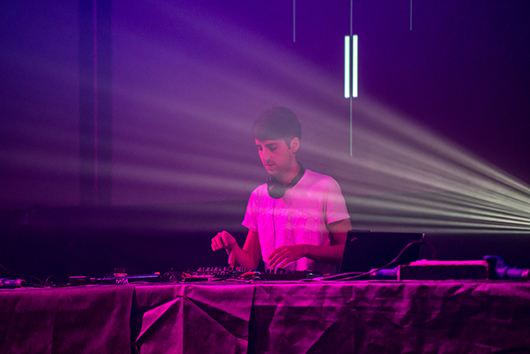
Despite the disappointment of Thursday night’s live show, we had no complaints about Holden’s DJ set on Friday at Cantieri OGR Torino, a converted factory that had been transformed into a raw, visually impressive performance space. The guy has been DJing for quite some time, and has carved out a unique musical niche that goes heavy on melody and even flirts with trance, but somehow never crosses the line into full-on cheese. Readers may recall that we recently saw Holden at this year’s MUTEK.MX (our review is here), and his set at Club to Club was similarly compelling, although he elected to dive right into heavy dancefloor groves rather than kicking things off with loose, jazzy rhythms. Cuts from Four Tet and Koreless elicited particularly enthusiastic responses, but it was clear from the get-go that Holden had the enthusiastic crowd in the palm of his hand, and he happily bopped right along with them in the DJ booth.
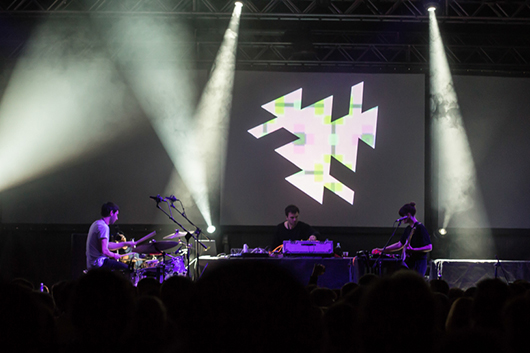
Factory Floor
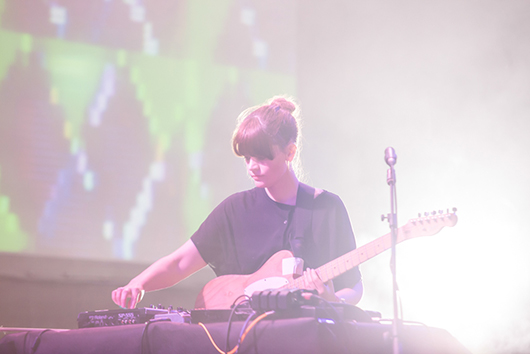
Factory Floor’s live show was very solid.
After James Holden’s live set on Thursday, it’s no stretch to say that we were feeling a tad disappointed, but those feelings quickly dissipated once Factory Floor took the stage for the closing set at OGR. The London trio has been riding high since the release of its much-lauded self-titled debut album, but we hadn’t previously had a chance to see how the group’s no-wave-influenced strain of dance music would translate in a live setting. As it turned out, the transition from the studio to the stage has been seamless, as the UK outfit nimbly combined organic and drum-machine rhythms and injected additional energy with its vocals (which were often either deadpan or yelpy) and assorted instrumentation (which included guitar, synths, and various pieces of gear). Furthermore, the performance definitely looked like the work of a proper band, but the music was also completely suitable for the dancefloor without pandering to tired tropes or being overtly “rock” or “indie” in orientation. In short, Factory Floor was as good—or perhaps even better—than we had hoped, which is why we ultimately went to bed happy on Thursday night.
Jon Hopkins
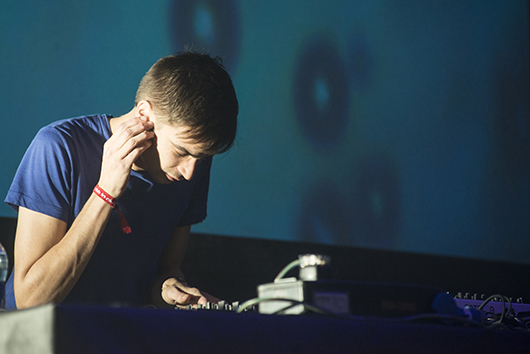
Jon Hopkins’ set showed that he’s got the whole “live show” thing down to a science.
Following the release of his stellar Immunity LP earlier this year, London producer Jon Hopkins has been a fixture on the festival circuit, and his appearance at Club to Club demonstrated just how well his months on the road have suited him. Pulling heavily from Immunity, Hopkins’ set was, in a word, precise. And though very little about his time on stage felt spontaneous, it was undoubtedly potent. The music on offer could ostensibly be described as techno, but there was nothing austere about what Hopkins served up. From start to finish, everything sounded big, as though he set out to fill every millimeter of the sonic spectrum with his richly detailed creations. The biggest cheers came for Immunity tracks like “We Disappear,” “Open Eye Signal,” “Breathe This Air,” and “Collider,” but Hopkins did veer away from those songs’ big-room pulse, occasionally stepping into spells of moody introspection (which we liked) and glitchy, dubstep-leaning halftime breakdowns (which we didn’t). Still, regardless of what genres Hopkins was experimenting with, it was impressive to simply watch him work. It’s not often that an artist accomplishes exactly what they set out to do with their music, particularly in a live setting, but Hopkins’ set at Club to Club seemed to indicate that he’s done exactly that.
Holly Herndon
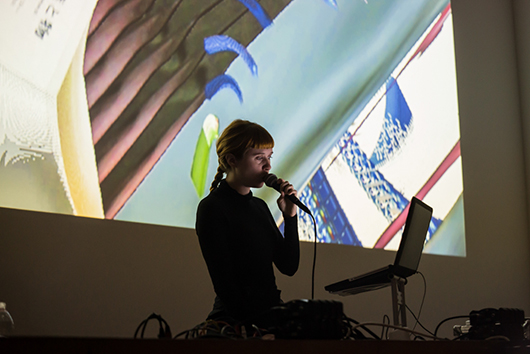
There was a lot of “dark” music at Club to Club 2013, and Forest Swords provided the best of it.
The entire electronic spectrum has seen a resurgence of dark and gloomy sounds in recent years, particularly with the rise of labels like Tri Angle and PAN. And while the acts on these imprints (and other like-minded outposts) often sound quite different when compared side by side, there are numerous stylistic threads (occult imagery, references to goth.industrial music, etc.) that can tie them together. This “scene” (for lack of a better word) was well represented at this year’s Club to Club, and though some artists sounded better than others, most of them came off pretty well.
Holly Herndon was one of the first acts to perform at Club to Club 2013, and her live set was a bit hit and miss. Granted, the atmosphere didn’t help her, as she performed in the auditorium at the Fondazione Sandretto Re Rebaudengo. (The building basically served as the festival’s headquarters and kicked off each evening with a series of events, which included panel discussions, live performances, and DJ sets.) Unfortunately, with its tightly packed, stadium-style seating, the auditorium felt more like a university lecture hall than a concert venue. As such, some of the performances in there throughout the weekend were a little awkward, particularly as attendees drifted in and out of the room. Putting these issues aside, Herndon’s live show was undoubtedly interesting, at least from a technical standpoint. The performance was largely centered around Herndon’s manipulations of her own voice, and she also appeared to be using some kind of software interface that altered the music based upon how she moved some small sensors with her hands. In terms of music, while Herndon’s more ambient and experimental passages were engaging, the set’s brightest spots generally came when she veered toward more techno-oriented structures.
Lee Gamble
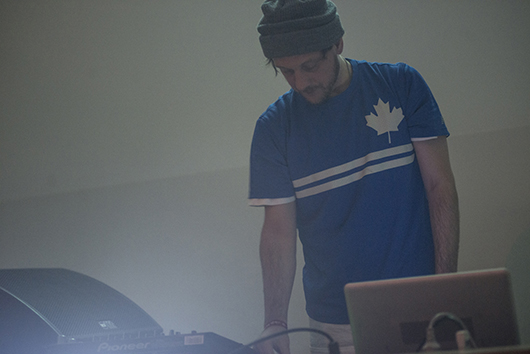
Still, despite her struggles, Herndon fared better than PAN standout Lee Gamble, who played in the same auditorium on Friday evening. Perched behind a laptop and frequently crouching down so that only a portion of his body was visible, Gamble decided to eschew a steady kick during the majority of his set; as the music drifted through the room, it quickly became obvious that his dark and spacey explorations were not a good match with the space, and the growing restlessness of the crowd made things a bit uncomfortable. After seeing Gamble, we were worried about the fate of Forest Swords, who was slated to play the auditorium on Saturday. However, our trepidations proved baseless, as the mysterious UK act’s set was unquestionably one of the highlights of the entire festival. Though Forest Swords himself operated a small set-up of gear (that appeared to all be linked to his laptop), he wisely chose to bring along a live bassist, who injected some much-needed dynamism into the proceedings. Forest Swords even picked up a guitar of his own for a couple of songs, adding some bluesy riffs to his brooding mix of dark soundscapes and broken R&B and hip-hop rhythms. Combined with his visuals—a black-and-white reel that largely focused on vintage footage of ballet and other classical dance—Forest Swords did a wonderful job creating an enticing atmosphere, and impressed just about everyone who was lucky enough to squeeze into the packed auditorium for his set.
Dinos Chapman
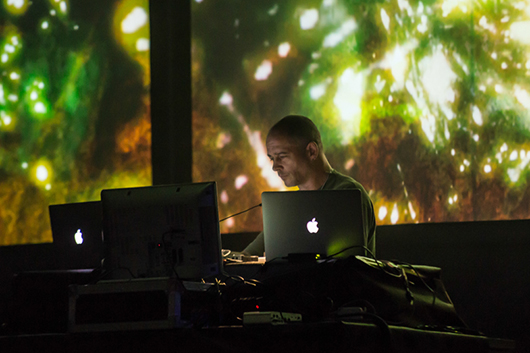
The Haxan Cloak
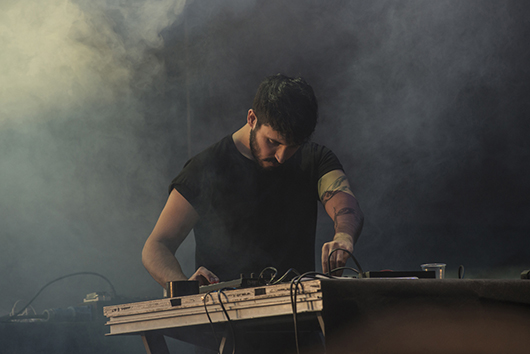
Thankfully, not all of the festival’s “dark” music was confined to the Fondazione auditorium. Thursday and Friday night also featured line-ups at the Cantieri OGR Torino, a converted factory that had been transformed into a raw, visually impressive performance space. UK producer Dinos Chapman took to the OGR stage on Thursday, and his abstract, Actress-indebted take on techno was competent, even it wasn’t hugely engaging. Much better was The Haxan Cloak, who opened up Friday night’s OGR show with a visually stark but sonically arresting performance. His recorded music is restrained to begin with, so we weren’t sure how it would translate in a festival setting, but with the volume cranked and the crowd at attention, every note resonated and every bit of percussion sounded like an ominous thunderclap. The set unfurled in movements rather than proper “songs,” but the Club to Club audience seemed more than willing to follow along on The Haxan Cloak’s journey.
Andy Stott
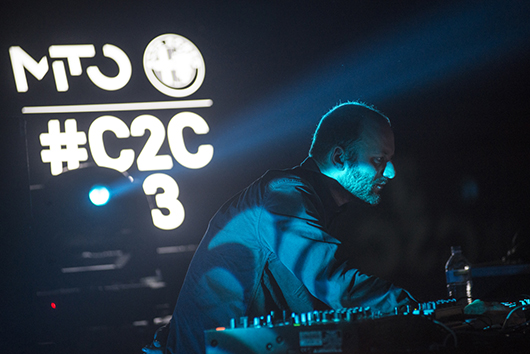
Andy Stott dabbled in some new musical territory.
With all this talk of “dark” music, keen-eyed readers may be curious why there has been no mention of Andy Stott, who can easily be lumped into the same camp with the artists mentioned above. Stott performed at Saturday night’s Gran Finale in the venue’s Sala Rossa, a bunker-like structure which served as the second stage and played host to many of the evening’s bass-oriented acts. Because Stott was given the closing slot, we actually missed the beginning of his set (we were having a hard time pulling ourselves away from Ben UFO, who was performing at the same time on the main stage); however, when we eventually walked into the Sala Rossa about halfway through his performance, we found that Stott was playing, well, music that we hadn’t heard from him before. Namely, the rhythms were a whole lot faster than what we expected. It wasn’t bad, it was just a departure from the slow, dubby beats we’ve heard from Stott in the past. (Later on, we were told that the first half of his set contained sounds that were more in line with his recorded output.) Granted, Stott’s work has frequently touched upon ideas lifted from classic jungle and hardcore, but at Club to Club, Stott was exploring those genres in an explicit fashion. Furthermore, the set included forays into footwork-esque beats and even hip-hop. Again, none of it sounded bad, but it was unquestionably different. Given that he was performing live, perhaps he was experimenting with some new material. Regardless, we definitely left the party intrigued and wondering exactly what Stott is going to do next.
Kyle Hall
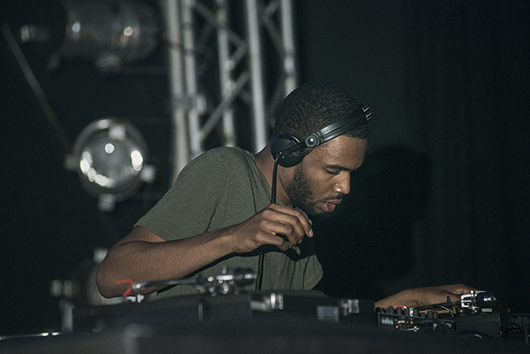
Kyle Hall and Objekt stole the show on Friday night.
Following earlier shows at the Fondazione Sandretto Re Rebaudengo and Cantieri OGR Torino, Club to Club wrapped up its busy Friday schedule at Hiroshima Mon Amour, a place that, oddly enough, was one of the few actual clubs that hosted a festival event this year. The two-room venue was sold out, which wasn’t surprising given that the line-up included the likes of Nina Kraviz, Koreless, Kyle Hall, and Objekt. (Todd Terje was also scheduled to play, but unfortunately had to cancel at the last minute.) All in all, it was a very solid night of music, but Objekt and Kyle Hall were the clear standouts.
Koreless
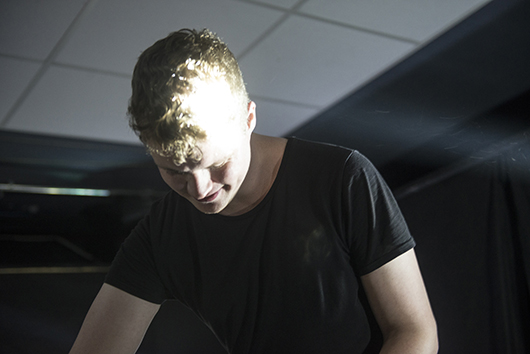
Objekt was in the club’s smaller second room, and stepped up to the decks around 2 a.m. Following the comparatively mellow sounds of UK producer Koreless, the Berlin DJ’s taste for hard, thudding techno provided a real shot in the arm, and quickly got the dancefloor moving. As he continued, Objekt did switch things up a bit, occasionally slipping in an electro or ghetto-house cut, but techno was undeniably the main focus, and the tempo only increased as the set continued. In truth, this year’s Club to Club line-up didn’t feature many straight-up techno acts, but that ultimately only made us appreciate Objekt even more; his set wasn’t for the faint of heart (they never are), but it was precisely put together and invigorating to watch unfold.
Objekt

Back in the main room, Kyle Hall’s set began around 2:30 a.m., and it found him going deep and getting weird in a most pleasurable fashion. It wasn’t that long ago that we were raving about Hall’s appearance at the Decibel festival in Seattle (our review is here), and he was operating at a similar level of excellence in Turin. The Detroit DJ and producer is increasingly defining himself by his love of raw, soulful sounds, and he absolutely indulged that passion at Club to Club, combining dubby drum workouts with bizarre slices of acid house and warped disco cuts. It’s clear that the man has deep crates at his disposal, which means that no two Kyle Hall sets sound exactly alike, but he does make sure to cultivate a consistent vibe, one that’s enjoyably rough around the edges and fully capable of livening up just about any dancefloor.
Nina Kraviz
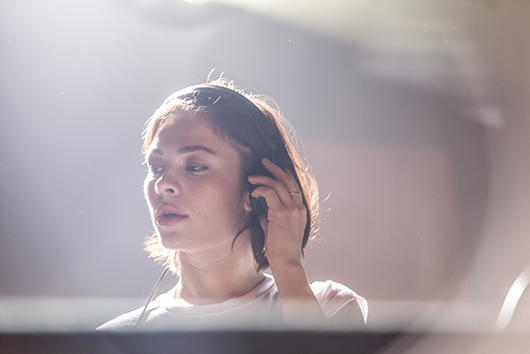
Someone was going overboard with the strobes.
Admittedly, this is a minor gripe, but on Friday and Saturday night at Club to Club, whoever was in charge of lighting—both at Cantieri OGR Torino and Hiroshima Mon Amour—was going way too heavy on the strobes. Granted, strobe lights are often annoying when they’re not being used in moderation, but this was an example of extreme overuse. During the sets from Factory Floor, James Holden, and Kyle Hall, it was literally difficult to keep one’s eyes fixed on the stage because the flashing lights were frequently on overdrive. Perhaps someone was trying to make up for these artists’ lack of visuals, but this was not the right way to go about it. Next year, those lighting techs’ strobe privileges need to be revoked.
Kode9

Kode9 put together a symphony. Really.
While it’s a safe bet that most people who saw Kode9 at Club to Club will remember his Saturday-night set in the Sala Rossa at the Gran Finale, the veteran UK artist actually played a much more substantial role in this year’s festivities. Part of the festival’s mission is to celebrate artists’ experimental impulses, particularly when those impulses have something to do with the city of Turin, which explains why Kode9 was enlisted to oversee a project that was dubbed A Great Symphony for Torino. Basically, five local artists were commissioned to put together a piece of music inspired by a particular locale in Turin. After their works were completed, Kode9 then utilized their compositions to create a piece of his own, which he actually debuted during a panel discussion on Saturday evening at the Fondazione Sandretto Re Rebaudengo. All of the pieces will eventually be released online, but for now, they’re only playable when a barcode is scanned at each of the designated locales around the city.
Even for those of us in attendance, the whole thing was admittedly a bit complicated, but there’s little question that the project was interesting, and the involvement of Kode9 only boosted the overall level of intrigue. It was also a great sign of Club to Club’s versatility that just a few hours after this panel discussion, Kode9 was behind the decks in the Sala Rossa, mashing up the floor with a bass-heavy mix of grime, bassline, hip-hop, footwork, and more. Somehow, both Kode9’s symphony and his DJ set made perfect sense within the context of Club to Club, and reminded us why we liked the festival so much in the first place.
Cantieri OGR Torino
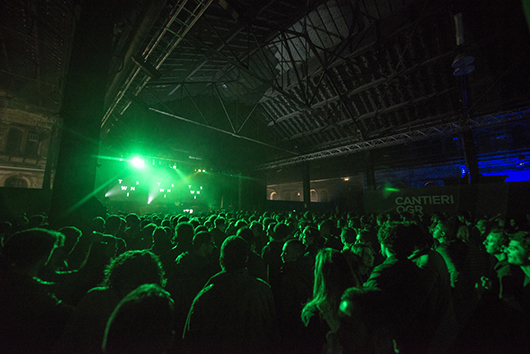
It would have been nice to see some additional Italian acts.
Granted, this is a challenging issue for almost any festival that’s happening in a place where local talents rarely get noticed outside of their own country, but we would have appreciated the opportunity to see a few more Italian acts during our time at Club to Club. In fairness, the festival’s organizers did book several Italian DJs and producers through the weekend; almost every event included at least one or two Italian artists. However, many of these acts were given early opening slots or were placed in spots where few people were likely to pay attention. (For example, many Italian DJs were enlisted to soundtrack the bar area each evening at the Fondazione Sandretto Re Rebaudengo.) From a commercial perspective, there’s little question that festivals need to book artists who are going to draw a crowd, and even within Italy, it’s a safe bet that acts from the US, the UK, and Germany are more likely to draw a crowd, just because they’re more known on an international level. And to Club to Club’s credit, a large number of its foreign-talent bookings were exclusive Italian appearances or even Italian debuts, so a clear effort was made to ensure that this year’s line-up was something special and not merely a rehash of the usual DJs and artists who come through Turin. At the same time, part of the fun of attending a festival is discovering new artists, so it would have been great if just a few more of the prime slots (or even just the slots that didn’t open or close an event) had gone to Italian acts. Obviously, this is a tricky proposition and a difficult challenge, but given Club to Club’s success in just about every other area, we think that the festival’s organizers are up to it.
Gran Finale at Lingotto Fierre
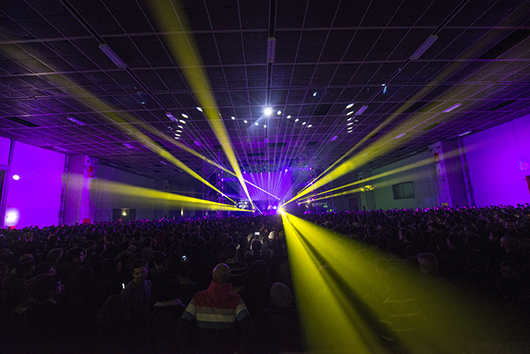
It was hard to take issue with Saturday’s Gran Finale.
Simply put, the line-up for the Gran Finale was stacked. We’ve already mentioned John Talabot, Ben UFO, Andy Stott, and Kode9, but the two stages at the Lingotto Fiere featured a lot more in the way of quality acts. From when the doors opened at 9 p.m. to when the lights came on at 6 a.m., there was always some high-quality music to be heard, and the caliber of acts in both rooms often made choosing between stages a difficult task. For the noise lovers, Fuck Buttons assaulted everyone’s eardrums early on, while Diamond Version married glitchy interludes with hard-charging techno sounds. Four Tet‘s chiming tones and ramschackle rhythms provided an early highlight, Julio Bashmore had the crowd cheering for his big-room house creations, Rustie melted faces in the Sala Rossa with his futuristic trap flirtations, and Machinedrum offered up another addition of his compelling Vapor City audio-visual show (although the visuals did crap out halfway through his set). Throughout the evening, we found ourselves repeatedly drifting between performances, as it was simply too tempting to go and check out what was happening on the other stage. Of all the artists who played, only one act left us cold, and that was Berlin duo Modeselektor. The long-running pair is usually quite good, especially in a festival setting, but its DJ set at Club to Club largely consisted of tepid and overly linear techno cuts. As always, Sebastian Szary’s on-stage antics and exuberantly goofy mic work riled up up the crowd, but the actual music wasn’t on par with what was being presented by the rest of the line-up. That said, we easily took refuge in the sounds of Kode9 and Rustie, and found that perked up quickly. On a night that was basically overloaded with talented acts, it was easy to overlook a single performance that didn’t strike our fancy.
Gran Finale at Lingotto Fierre
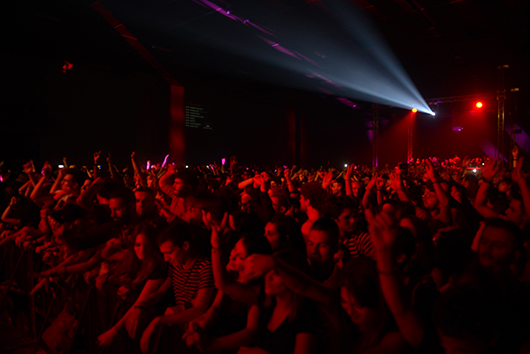
Club to Club has become one of our favorite festivals.
Scheduled at the end of the year and situated in Turin (a city that isn’t widely regarded as a musical hotspot), Club to Club is an easy festival to overlook. By the time November rolls around, many music enthusiasts have already concluded their festival schedule for the year, which is perhaps Club to Club’s enthusiastic crowd continues to be so overtly Italian. That being said, if organizers continue to put together these kinds of line-ups, the festival isn’t likely to remain a local happening for much longer. It’s easy to say that Club to Club is the best festival in Italy, but it’s actually better than that; a case could be made that it’s already in the top tier of festivals in Europe. And what’s more impressive is that Club to Club’s appeal rests almost entirely on the caliber of its curation. Where other festivals can rely (at least in part) on their locales or even the summer heat to draw in music lovers from around the globe, Club to Club’s strength is drawn almost entirely from the quality of its artists and the passion that its organizers bring to the table. Presenting a large-scale, multi-night electronic event that touches upon the music’s bleeding edge without alienating the dancefloor is no easy task, yet it’s something that Club to Club does both naturally and successfully. That’s worth celebrating, and that’s why we’ll keep coming back.

